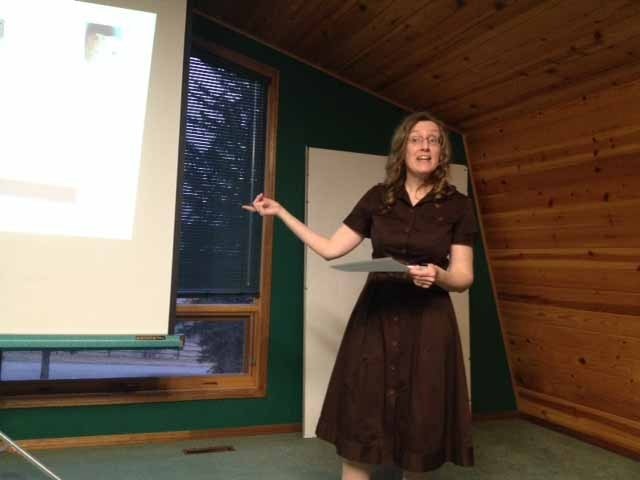Shari Payerl, an archaeologist and secretary of the Archaeological Society of Alberta, provided an interesting information session at Glenbow Ranch Provincial Park’s Visitor’s Centre April 22, telling the story of a quarry and how a town grew around it.
Payerl has spent five years researching this project, including the families who lived on what is now Glenbow Ranch Provincial Park between 1906 and 1927.
The June 1911 census revealed there were 112 people living in the Village of Glenbow. The Glenbow Quarry started operating in 1906 with a worker’s building located nearby. The village was built in 1909, housing many of the married men with their families. Eventually a school and general store with a post office were built. The Canadian Pacific Railway also stopped in the village. Many of the workers were transients, so the population varied throughout the years, as people moved in and out.
The Glenbow Quarry was an important part of Alberta’s history because it provided the sandstone to build many of our historic buildings in Calgary, such as the Land Titles Office, the McDougal building and various schools. Sandstone from this quarry was also used to construct the Legislature Building and Government House in Edmonton.
Recent archaeological digs began at Glenbow Ranch Provincial Park in October 2013 when the location of the bunkhouse was found. The general area was known, so excavation procedures recovered artifacts such as nails, glass, broken pottery, pieces of metal, even a piece of a pipe. Finally pieces of corner foundation were discovered so that the size of the building could be calculated. It was five metres east/west and seven metres north/south in dimension.
The in-depth research verifying authenticity of information received by Payerl is to be commended. Authorities such as Glenbow Archives and the Calgary Public Library’s history department assisted her to document the evidence she found. Payerl has a master’s degree in archaeology, taught at Mount Royal Collage and has an absolute passion for this type of work.
Twenty-six families have been documented in the book kept at Glenbow Ranch Provincial Park’s Interpretive Centre, however, Payerl has researched 36 different families to date, tracking down and meeting with their descendants.
An example of this painstaking work was when she heard about a very cold winter in 1911. The family had to sleep in shifts to keep the fire going so they wouldn’t freeze to death. Shari contacted Environment Canada to double check this claim, and sure enough, on Jan. 12 and 13, 1911 the temperature dropped down to -44 degrees Fahrenheit at Glenbow Park.
The quarry was operated on three levels, where three Wearmouth brothers worked. Currey worked at the top level where the drilling and dynamite explosions took place. He and his wife, Betty, had 10 children and were the last family to move away from Glenbow in 1927. Currey’s brother, George, worked at the middle level with the saws and planers, and the third brother, Tom, worked on the bottom shipping level.
Despite the extremely dangerous working conditions at the quarry, there were only two industrial deaths during its existence; Dr. Park from Cochrane was called on both occasions to help these injured men, who were put on the train to a Calgary hospital – Alex Robertson Urquhart (died in 1907 at Holy Cross Hospital) and Alexander McBeath (died in 1911 on the train).
Payerl’s presentation was exceptional, containing several photographs, too numerous to mention all. Some of which were a photo of the schoolhouse designed by Richard Palin Blakey, who was also the man responsible for overseeing the completion of the Legislature Building’s staircase, rotunda and south wing; Betty Wearmouth, James Pedigrew, Gillard-Hughes (wedding photo 1910), William and Edith Yates, nurse Elsie Black (who cared for a sick family for weeks), Dugald and Margaret McKechnie, Fred and Lydia Wall and the well-known Dr. Andrew Walter Park with his wife Amelia Meredith Park.
Payerl, the people of Cochrane thank you for your ongoing dedication and countless hours of work in researching our history and helping to keep our past alive.




